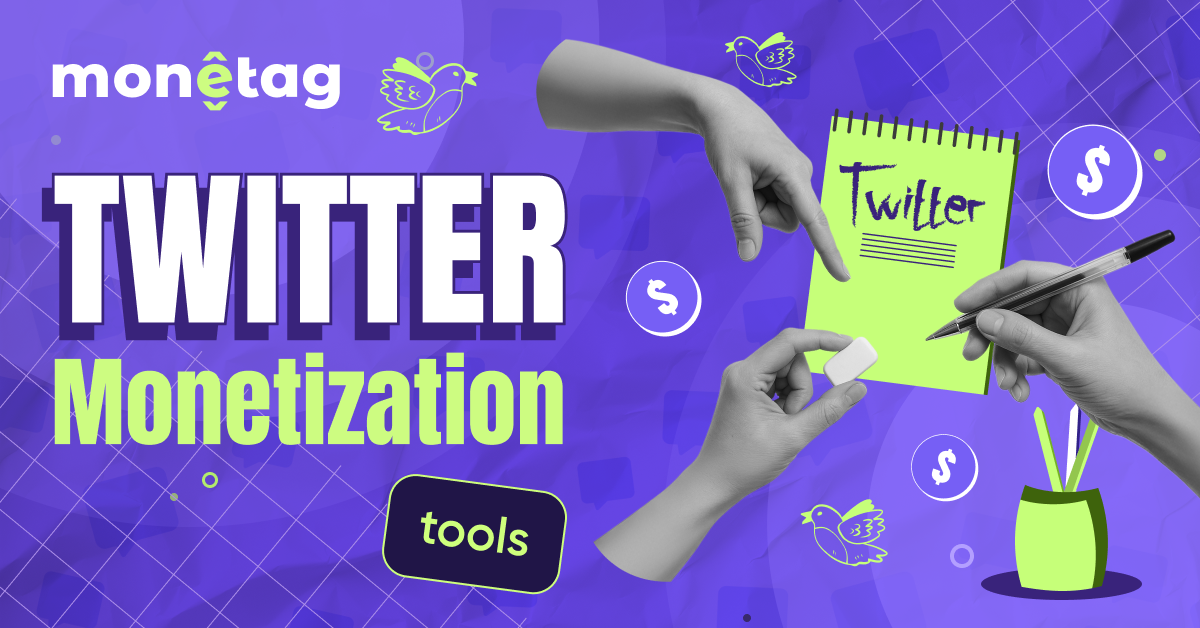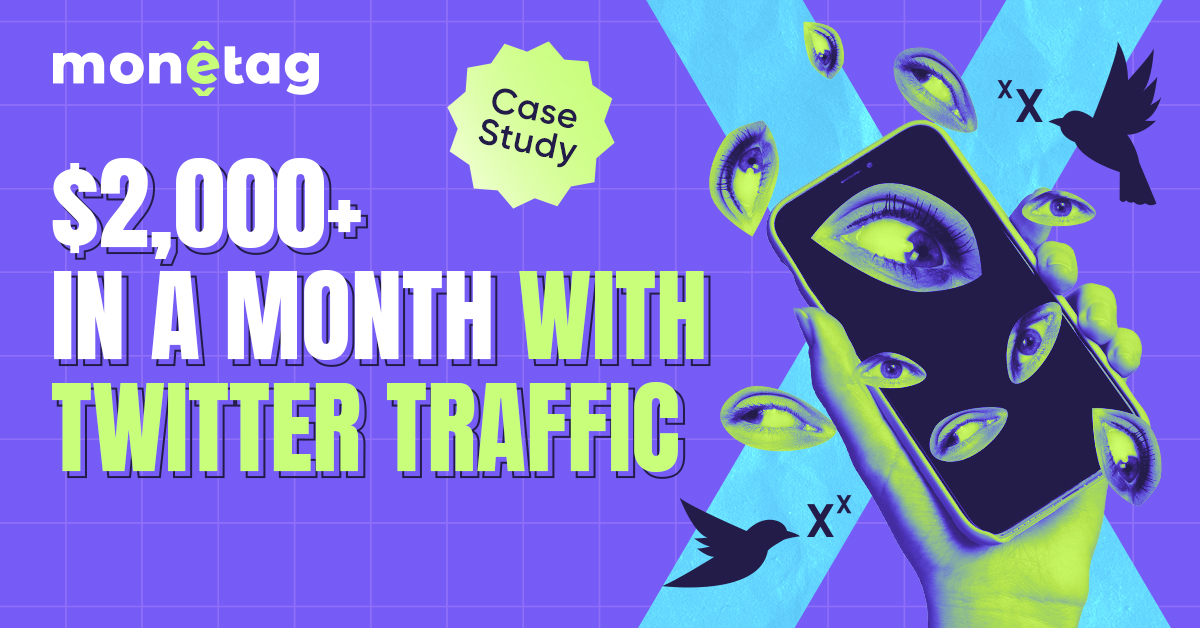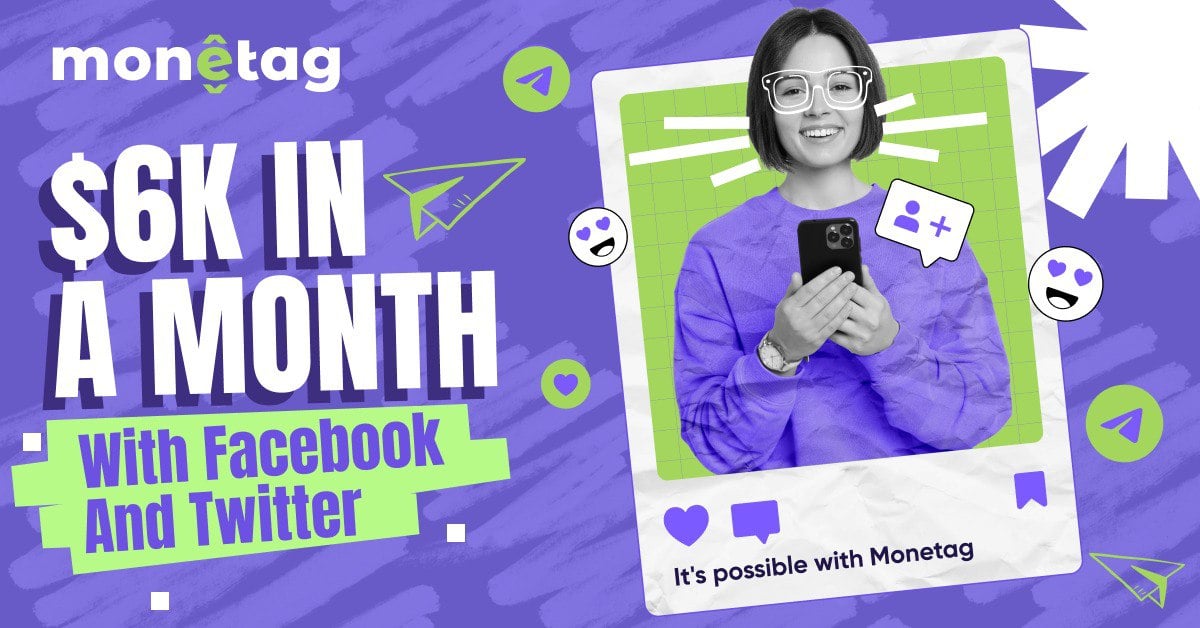Best Twitter Monetization Tools: How to Boost Your Twitter Earnings

Twitter isn’t just about hot takes and trending memes anymore. It’s become a weirdly practical space to make money. But the truth is, most of what works isn’t that obvious. It’s not just about going viral or having 100k followers.
It’s about knowing how to use the right Twitter monetization tool — and when.
Let’s talk about what people are really using, grouped by what they’re for.
Newsletter Tools — Turning Threads into Subscriptions
If you’re sharing ideas or insights on Twitter, newsletters are one of the top Twitter monetization tools. They let you take that attention and turn it into a direct line of communication — and income. These platforms help you do just that.
Substack

Substack is a full-service platform for independent writers to publish newsletters, build audiences, and offer paid subscriptions. It requires no technical knowledge — just an email address and something to say. Substack allows writers to monetize through monthly or yearly subscriptions, and recently introduced a Chat feature to foster community discussions directly within the app.
You can integrate your Twitter feed, embed tweets into your issues, and use their analytics dashboard to track subscriber growth, open rates, and click-throughs. Substack also supports podcast hosting and custom domains for writers on paid tiers.
- Pricing: Free to use for free newsletters. Substack takes 10% of paid subscription revenue. Payment processing through Stripe adds ~2.9% + $0.30 per transaction.
- Pros: Built-in discovery, no upfront cost, clean interface, good analytics, and optional community tools.
- Cons: Limited layout customization, locked into their ecosystem unless you export. Substack is a platform for publishing email newsletters with the option to charge subscribers. It’s easy to start with: you don’t need any tech setup or site hosting, and you can embed tweets directly into posts. It provides analytics on open rates, clicks, and subscriber growth.
Beehiiv

Beehiiv is a newsletter platform designed specifically for creators who want to grow fast and scale intelligently. Its clean and intuitive dashboard allows users to manage subscribers, view detailed performance analytics, and create custom segments for targeted campaigns. The editor supports rich media, embeds, and dynamic content blocks, making it easy to design visually engaging newsletters.
One standout feature is Beehiiv’s built-in referral system. Creators can incentivize their existing audience to refer friends by offering rewards, such as exclusive content or giveaways, all tracked automatically through referral links. This system is deeply integrated and customizable, helping drive organic growth through word-of-mouth.
For example, a user can set up a reward for anyone who brings in five new subscribers. Beehiiv tracks every sign-up and attributes it to the right referrer. The dashboard gives a real-time overview of referrals, conversion rates, and campaign performance.
- Pricing: It can be a fully free Twitter monetization tool: there is a free plan available with core features; premium plans start at $42/month and unlock advanced segmentation, automation, and referral programs.
- Pros: Growth-oriented tools, detailed analytics, flexible referral system.
- Cons: More advanced tools require a paid plan, and limited customization compared to some enterprise tools.
Kit (Formerly ConvertKit)

Kit is more than a newsletter tool. It’s a complete creator-focused platform built for turning followers into customers. You can create custom landing pages, host lead magnets, build nurture email sequences, and even sell products directly from your emails.
Its core strength lies in automation. Creators commonly use Kit to set up multi-step sales funnels. For example, a new subscriber might first receive a welcome email, followed by a time-delayed educational sequence that ends with a product pitch. You can tag users based on their behavior, like who clicked a link or downloaded a freebie, and send them down different content paths.
Kit also allows creators to sell digital products like ebooks or courses through its integrated commerce system. You can embed product blocks inside email campaigns or landing pages without needing a separate store. It integrates with platforms like Zapier, Shopify, Teachable, and Twitter, making it easy to connect your workflow.
- Pricing: Free for up to 1,000 subscribers, then from $15/month.
- Pros: Rich automation tools, product sales built-in, visual flow builder, high email deliverability.
- Cons: Slightly technical setup process for beginners, fewer design options compared to some competitors.
If you’re turning Twitter into a home base for your writing and want to earn from deeper content, these tools help you own your audience and monetize long-form engagement.
Affiliate Tools — Make Money from What You Already Recommend
Affiliate income is still a huge source of passive revenue — if it’s honest and tied to personal experience. These tools help make that practical and trackable.
ThirstyAffiliates

ThirstyAffiliates is a WordPress plugin specifically designed to help you organize and manage your affiliate links in one place. If you’re sharing links regularly in blog posts that are also promoted via Twitter, this tool helps you stay organized and track which links perform best.
It lets you assign categories and tags, automatically replace keywords with affiliate links, and view detailed reports on clicks and conversions. You can also create custom redirect URLs that are cleaner and more brand-friendly.
- Pricing: From $79/year.
- Pros: Easy link management and tracking.
- Cons: WordPress-dependent; not Twitter-native.
Geniuslink

Geniuslink is a dynamic link management tool ideal for creators with international audiences. It automatically redirects users to the appropriate regional storefront (e.g., Amazon US, UK, or Germany), which can significantly increase conversion rates.
It also consolidates affiliate programs, allowing you to manage links from multiple networks in one dashboard. Geniuslink integrates with Amazon, iTunes, and other major affiliate platforms, and it offers detailed analytics on link performance by country, device, and referrer.
- Pricing: Free tier; paid starts at $5/month.
- Pros: Great international support, analytics-rich.
- Cons: Learning curve for new users.
Bitly

Bitly is a simple yet powerful link shortening service that helps track engagement and manage your affiliate links without needing a full website. It’s particularly useful if you’re just starting out and want a lightweight way to monitor how your links perform.
With Bitly, you can create branded links, track real-time clicks, view traffic sources, and share short URLs across platforms, including Twitter, Instagram, or email. While not a dedicated affiliate platform, it gives you essential insights with minimal setup. And, it’s a free Twitter monetization tool unless you need some extra features.
- Pricing: Free for basic features; Pro from $8/month.
- Pros: Simple and widely supported.
- Cons: Analytics are limited on the free plan.
You don’t need to hard-sell to monetize with affiliate links — but if you do it well, these tools help you get paid for sharing what you genuinely use.
Tip Jar Platforms — Let People Say Thanks
Sometimes, people don’t want your product — they just want to say thanks. These platforms make it easy to accept that support.
Ko-fi

Ko-fi is a donation platform for creators. Users can make one-time or monthly contributions, or buy digital products from your page. There’s no platform fee on one-time tips. Ideal for artists, meme creators, or educators who want to keep things casual.
- Pricing: Free with 0% fee on donations.
- Pros: Simple, lightweight, and creator-friendly.
- Cons: Less known for building recurring revenue.
Buy Me a Coffee
A tipping and membership platform where creators can offer digital downloads, extras, or just collect donations. Offers a dashboard to manage supporters and post exclusive updates.
- Pricing: 5% transaction fee.
- Pros: Great for casual monetization.
- Cons: Not as robust as Patreon for communities.
Product Platforms — Selling Templates, Guides, Courses
A lot of creators turn knowledge into digital goods and use Twitter to drive traffic to them. These platforms handle the messy bits.
Gumroad

Gumroad is a user-friendly platform that helps creators sell digital products like ebooks, Notion templates, courses, videos, and more. It’s ideal for creators who want to launch quickly without building a storefront from scratch. The interface is simple: upload your file, write a description, set a price (even $0), and share the link anywhere — including in your Twitter threads or bio. Gumroad handles everything else: secure checkout, file hosting, sales tracking, and email delivery.
It supports pay-what-you-want pricing, subscriptions, and discount codes. You can also offer product updates and send broadcast emails to past customers. The dashboard shows detailed stats: purchases, revenue, conversion rate, and geographic distribution of your audience.
- Pricing: Free to start; platform charges 10% of each sale (plus Stripe/PayPal fees).
- Pros: Super easy to use, no upfront costs, works well with Twitter traffic.
- Cons: Limited storefront customization; platform fees are higher for smaller creators. Gumroad lets you sell PDFs, videos, templates, memberships, and more. You upload a product, set a price, and share the link. It takes care of taxes, payments, and file delivery.
Lemon Squeezy

Lemon Squeezy targets indie developers and product sellers. It offers software license management, tax compliance (especially for the EU), and clean checkout experiences.
- Pricing: 5% + 50¢ per sale.
- Pros: Excellent for SaaS and paid tools.
- Cons: Smaller brand, fewer community tools.
Thread Writing + Scheduling Tools — Stay Consistent, Stay Visible
Even the best monetization setup won’t work if you ghost your audience. These tools help you write and schedule tweets without burning out.
Hypefury

Hypefury is a Twitter content scheduler and automation suite tailored for creators selling digital products. It allows you to draft, schedule, and automatically republish high-performing tweets and threads, making your content work harder over time. You can also schedule quote retweets of your old tweets to drive engagement long after the original post.
Hypefury’s monetization features include auto-plugs — it can automatically reply to tweets or threads with your Gumroad, Patreon, or Substack links. You can also set it to send recurring tweets promoting evergreen offers, like “Want my checklist? Get it here.”
There’s also built-in Instagram cross-posting and a personal website builder based on your Twitter feed — helpful for creators who don’t want to run a separate site.
- Pricing: Starts at $19/month.
- Pros: Deep automation, monetization tools.
- Cons: Can be complex for casual users.
Tweet Hunter

Tweet Hunter is a comprehensive Twitter growth platform that combines AI content creation tools, scheduling, analytics, and automation. It’s especially popular among creators and marketers who want to grow fast without spending hours on the platform.
Its AI engine helps you generate tweet ideas, rewrite drafts, and improve hooks, drawing from top-performing content in your niche. You can schedule threads, set up automatic retweets, and even trigger auto-DMs to followers who interact with specific tweets. For example, if someone replies with a keyword like “ebook,” Tweet Hunter can instantly send them a download link or sign-up prompt.
The analytics dashboard tracks engagement metrics and conversion trends. It also includes lead capture tools (like email collection via DMs) and CRM-like features for managing high-value followers.
- Pricing: Starts at $49/month.
- Pros: Built-in lead gen tools, AI-assisted copy.
- Cons: Premium pricing.
If you want to tweet less but still show up consistently — and smartly — these are worth it.
Final Thought
There’s no perfect Twitter monetization tool. But there are plenty that fit you. Whether you’re writing threads, selling templates, or asking for tips, pick what feels natural.
And keep going.
People notice.
And sometimes, they pay.








